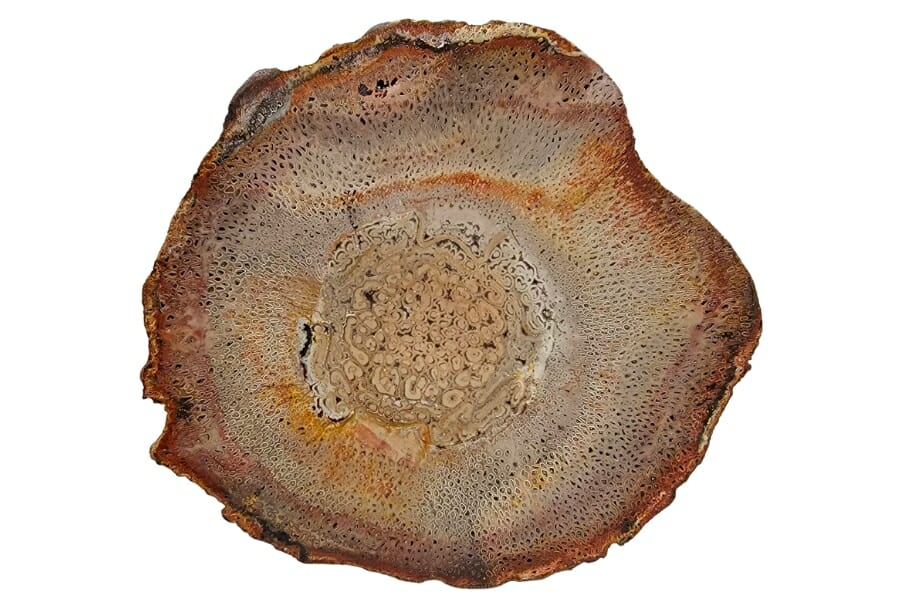Exploring the state’s rugged terrain offers a unique opportunity to discover petrified wood, a fossilized treasure from ancient forests. With the right tips, you’ll be ready to embark on your own adventure and uncover these fascinating remnants of prehistoric life.
Knowing where to look and what to expect will increase your chances of spotting these remarkable pieces scattered across this great state’s terrain!
Petrified wood you can find in the US
In the United States, several types of petrified wood can be found, each with unique characteristics based on the original tree species and the minerals involved in the fossilization process. Here are some of the types you’ll be able to find.
Araucarioxylon
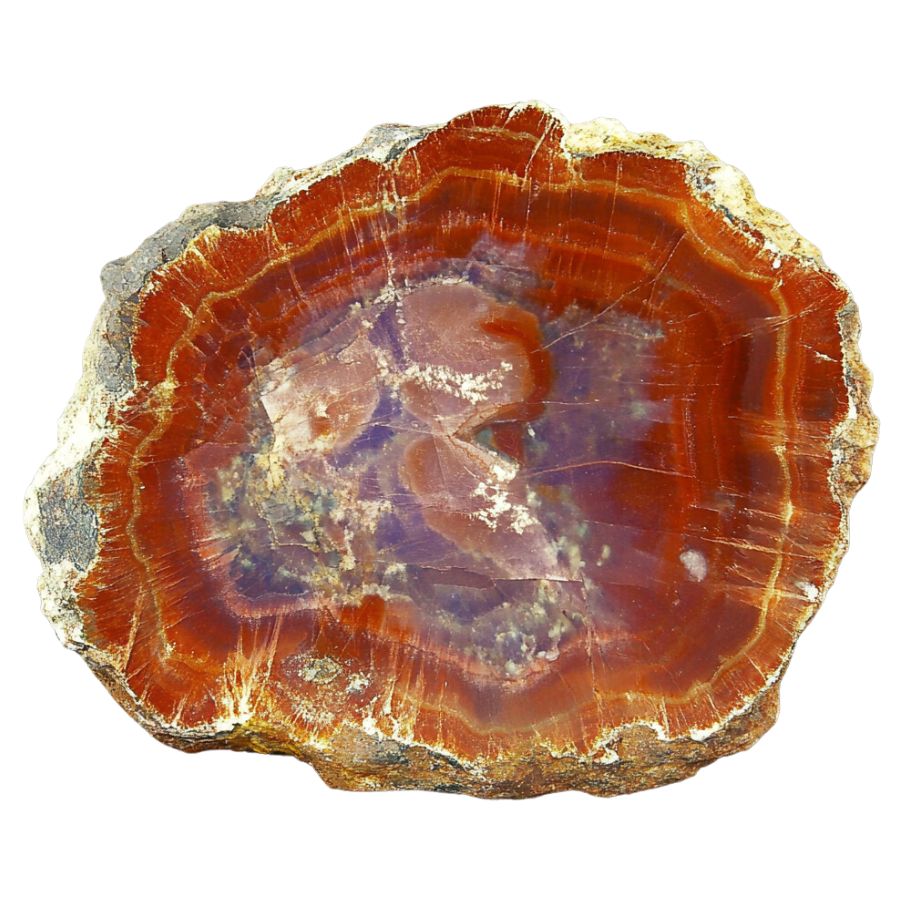
Found in the Petrified Forest National Park in Arizona, this is one of the most famous types of petrified wood. It comes from an extinct species of conifer. As Arizona’s state fossil, Araucarioxylon holds a special place in the state’s natural history.
These trees once formed vast forests during the Late Triassic period, about 225 million years ago. The vibrant colors in this petrified wood come from minerals that replaced the original tree material over time.
Metasequoia
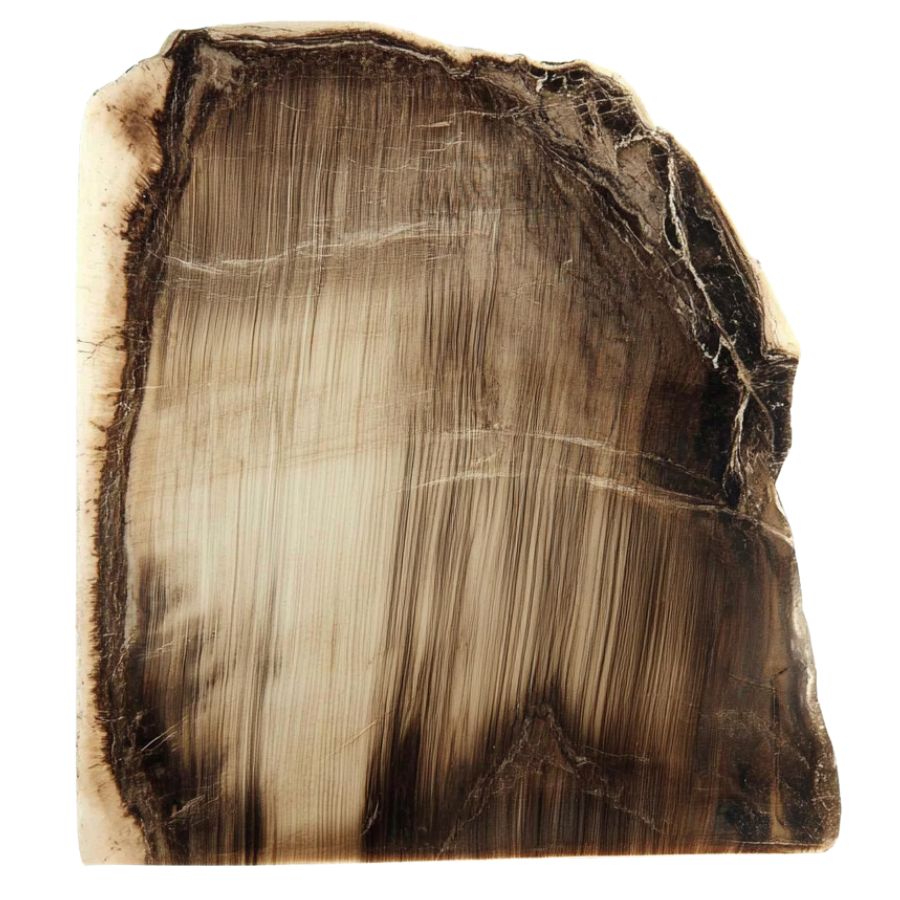
Often referred to as dawn redwood, this type of petrified wood can be found in various parts of the U.S., including the Pacific Northwest. Metasequoia was once thought to be extinct until living trees were later discovered in China.
Furthermore, its fine grain and reddish-brown color are characteristic features.
Palmoxylon
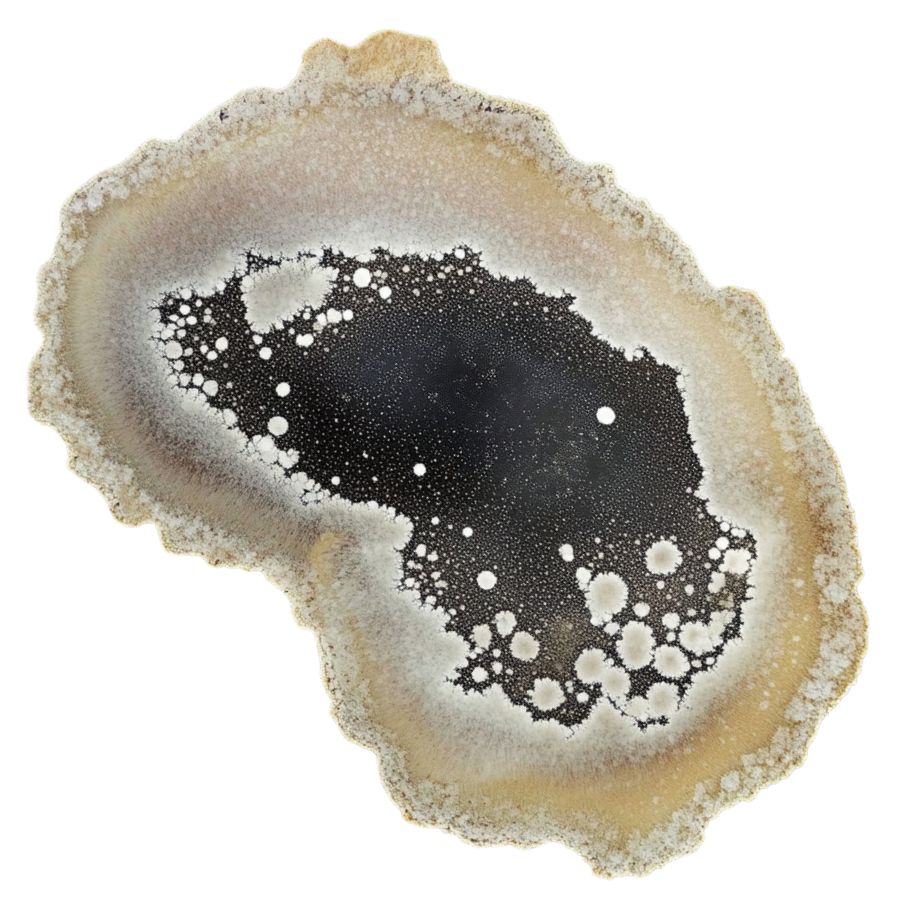
This petrified wood originates from palm trees and is often found in the Gulf Coast states like Texas and Louisiana. Recognized as the state stone of Texas, Palmoxylon is abundant and holds cultural significance.
The wood’s unique speckled or dotted pattern comes from the vascular bundles of the original palm tree. These fossils date back to the Cretaceous period, when the area was tropical and teeming with life.
Taxodium
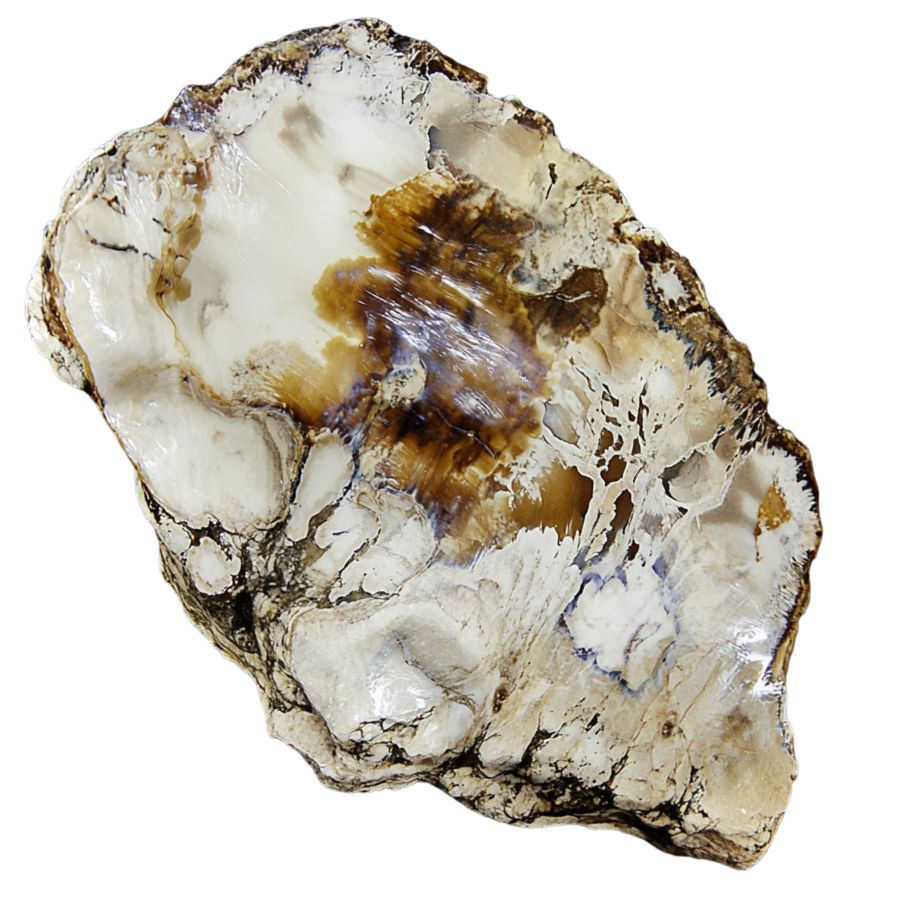
Also known as bald cypress, this petrified wood can be found in the southeastern U.S., particularly in areas that were once swampy. Taxodium wood is often found in places that were ancient swamps, where these trees thrived millions of years ago.
The wood is durable and shows intricate grain patterns, with growth rings and knotholes that tell the story of its long history. It’s a fascinating glimpse into the wet environments that once dominated the Southeast.
Sequoioxylon
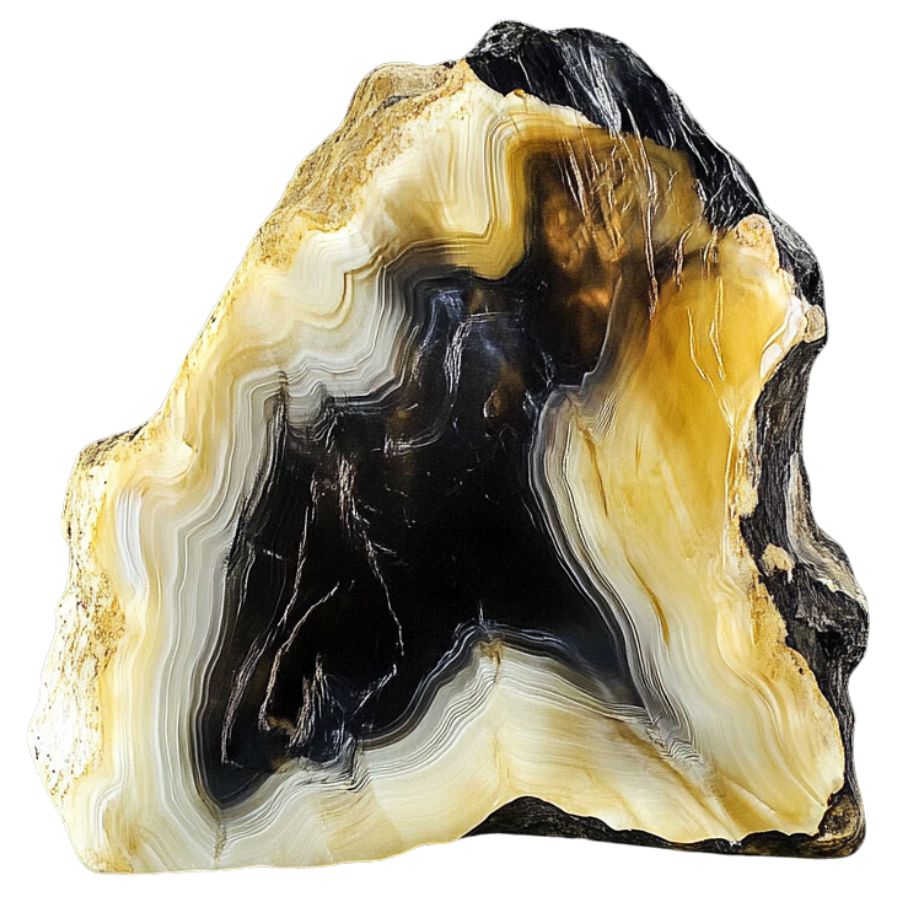
Petrified wood from ancient sequoia trees, found in places like California, where sequoia forests once thrived. These trees are the ancestors of the giant sequoias that still stand in California today.
The petrified wood is notable for its large, straight grain and reddish color, reflecting the immense size and age of the original trees.
Ginkgoxylon
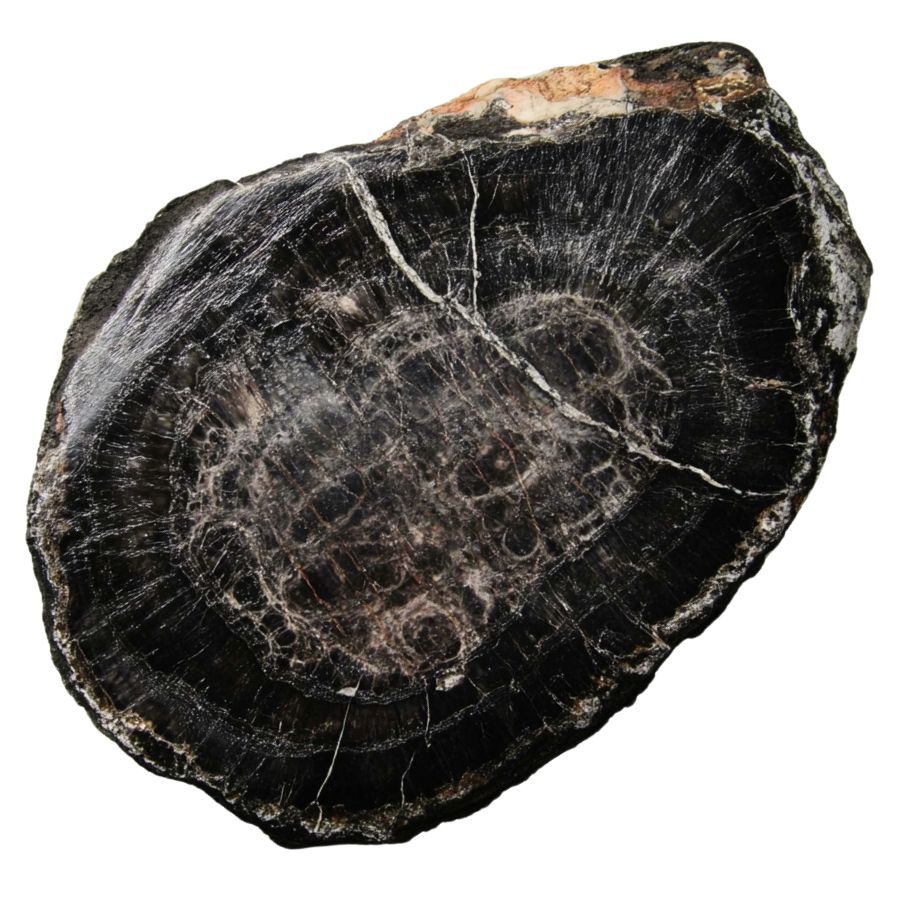
Petrified wood from ancient ginkgo trees, which can sometimes be found in states like Oregon and Washington. Ginkgo is one of the oldest tree species on Earth, with fossils dating back over 200 million years.
Ginkgo petrified wood often has a light color and may show patterns similar to the fan-shaped leaves of the living ginkgo.
Dicotyledonous Wood
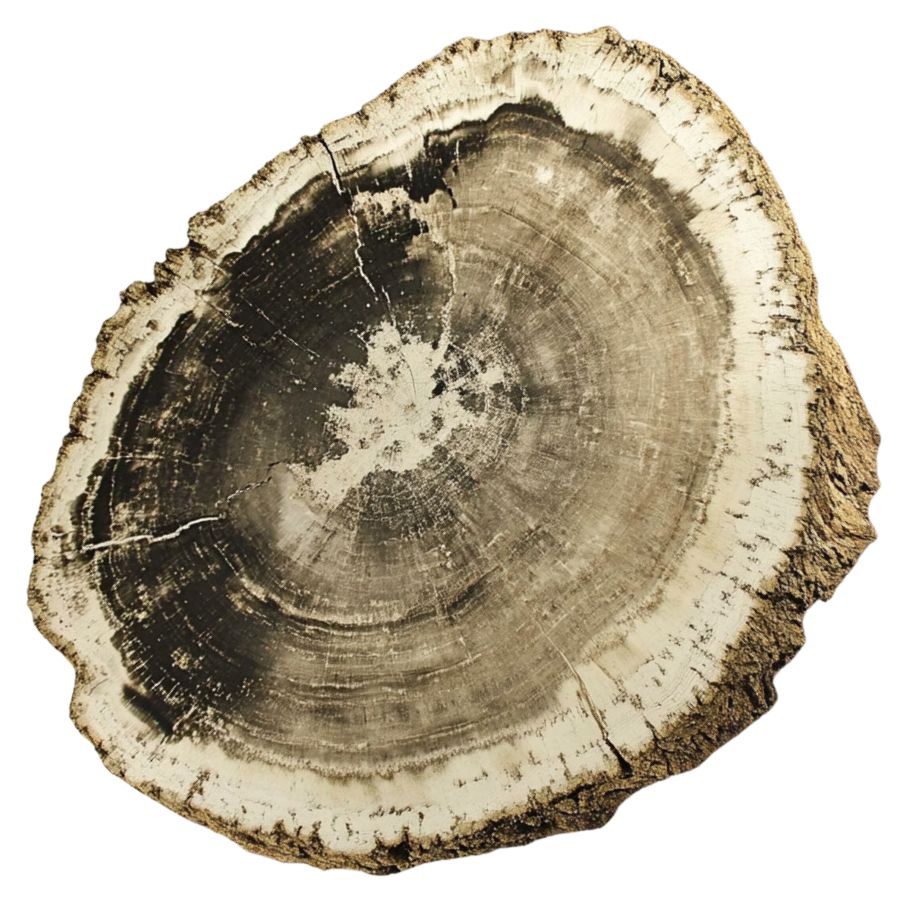
Found across various states, this type of petrified wood comes from broadleaf trees, making it more common and varied in appearance. You can spot dicotyledonous wood by the distinct vessels and growth rings that indicate seasonal changes.
This type of petrified wood is often found in regions that were once temperate forests, offering clues about the diverse plant life that existed millions of years ago.
Piceoxylon
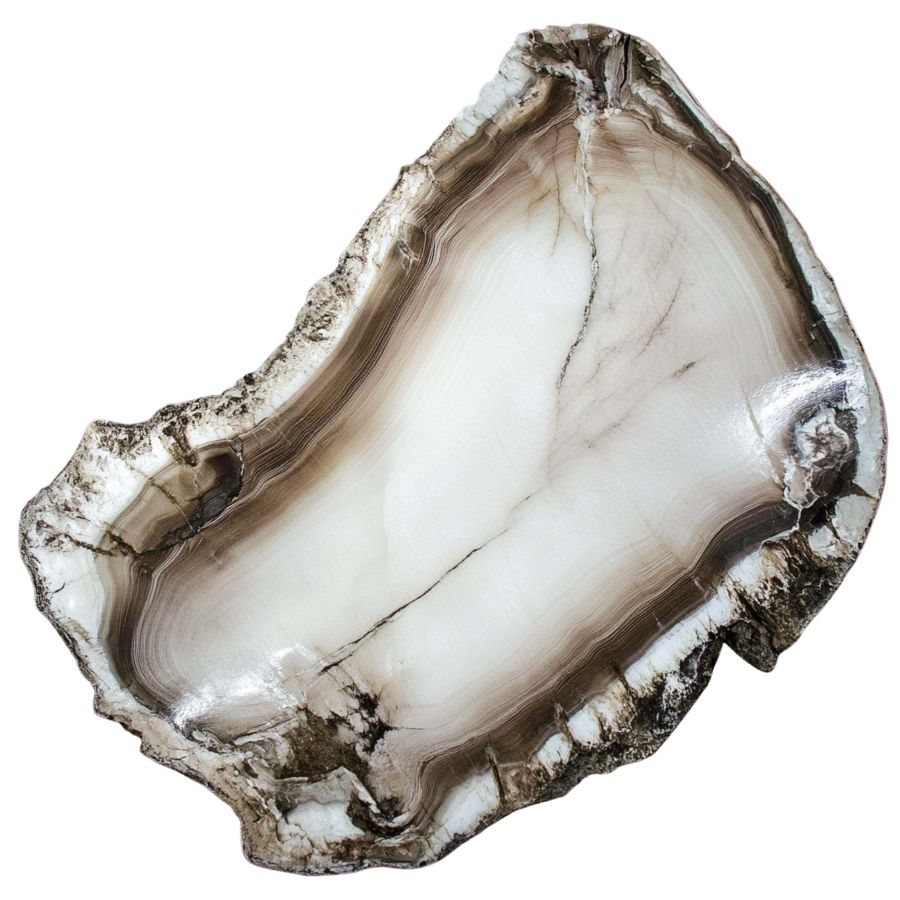
Petrified wood from ancient spruce trees, commonly found in areas like Wyoming and Montana, where coniferous forests once thrived. Piceoxylon is known for its straight grain and pale color, often showing growth rings that tell the tree’s life story.
These trees were part of the ancient boreal forests that covered large parts of North America during cooler periods.
A Quick Request About Collecting
Always Confirm Access and Collection Rules!
Before heading out to any of the locations on our list you need to confirm access requirements and collection rules for both public and private locations directly with the location. We haven’t personally verified every location and the access requirements and collection rules often change without notice.
Many of the locations we mention will not allow collecting but are still great places for those who love to find beautiful rocks and minerals in the wild without keeping them. We also can’t guarantee you will find anything in these locations since they are constantly changing.
Always get updated information directly from the source ahead of time to ensure responsible rockhounding. If you want even more current options it’s always a good idea to contact local rock and mineral clubs and groups
What Rough Petrified Wood Looks Like
Most of the photos you find of petrified wood are pieces that have been cut and polished. That is certainly useful but isn’t super helpful once you are out in the field. This is what you should look out for once you start hunting:
Exteriors like this
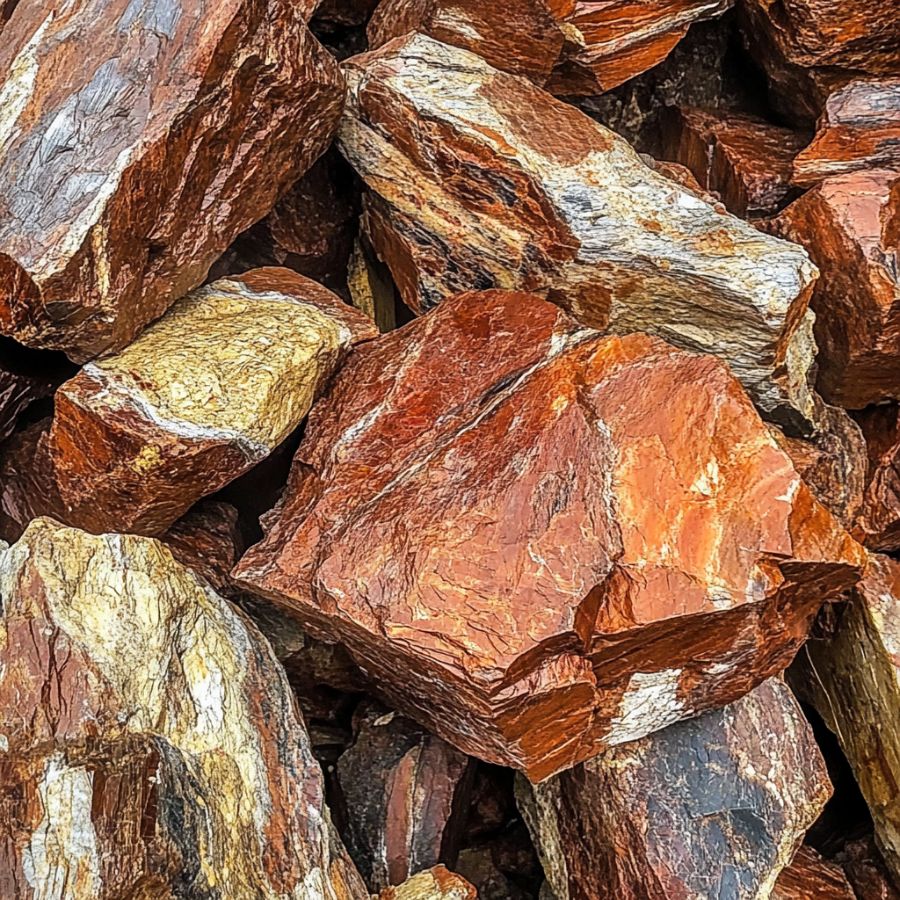
Every type of petrified wood has a different exterior and pattern but this is a good starting point on what to look for.
Texture and grain patterns
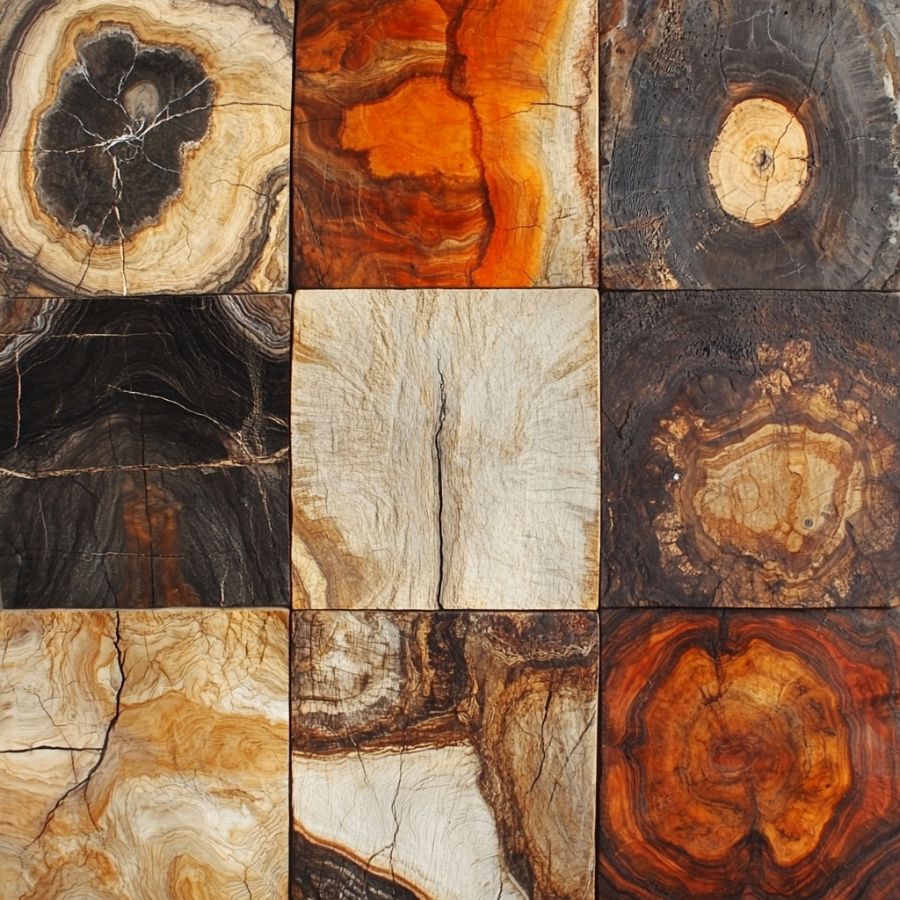
One of the most distinctive features to look for is the texture and grain patterns. Petrified wood often retains the original structure of the tree, including the grain, knots, and even growth rings. These patterns can appear similar to modern wood but are typically more rigid and fossilized.
Examine the surface for any linear patterns or striations that indicate the original wood grain. The texture may feel smoother or more polished in certain areas where mineralization has created a glassy effect.
Coloration and mineralization
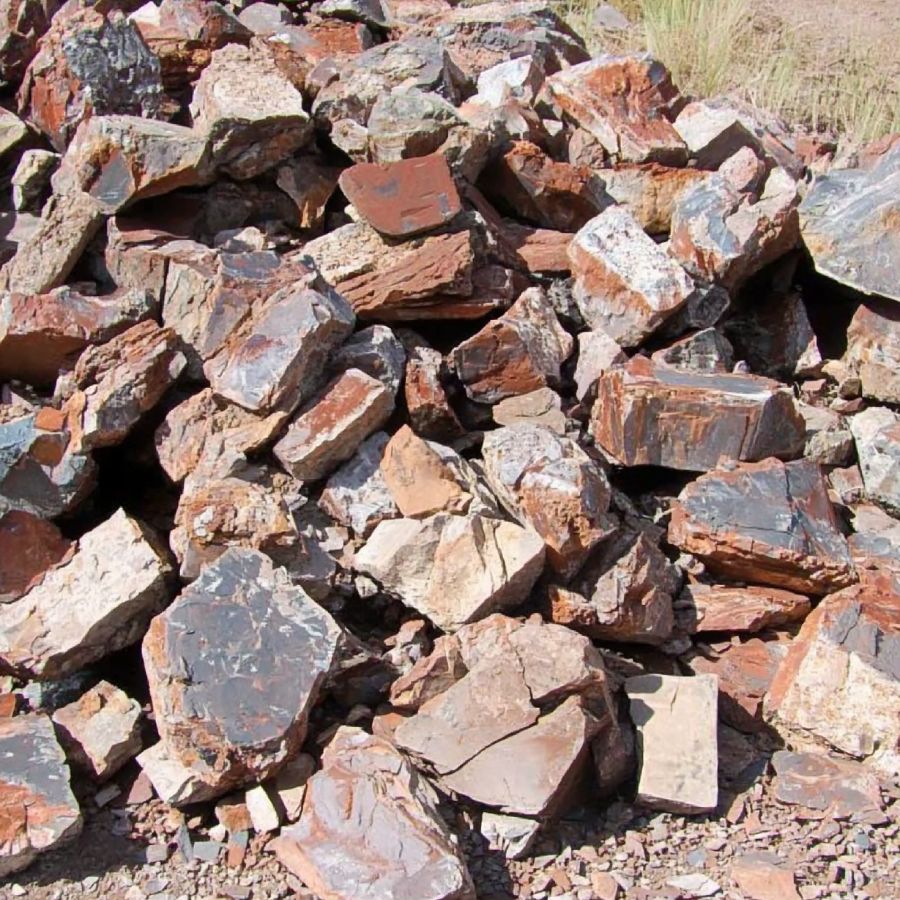
The color of petrified wood can vary significantly due to the minerals that replaced the organic material during the fossilization process. Common colors include shades of brown, red, yellow, orange, and black.
Some pieces might even exhibit multiple colors in intricate patterns. These colors are often more vivid and diverse than those found in regular rocks. When inspecting potential petrified wood, look for these distinct and varied hues, which can indicate the presence of different minerals such as silica, iron, manganese, and others that contributed to the petrification process.
Bark and exterior features
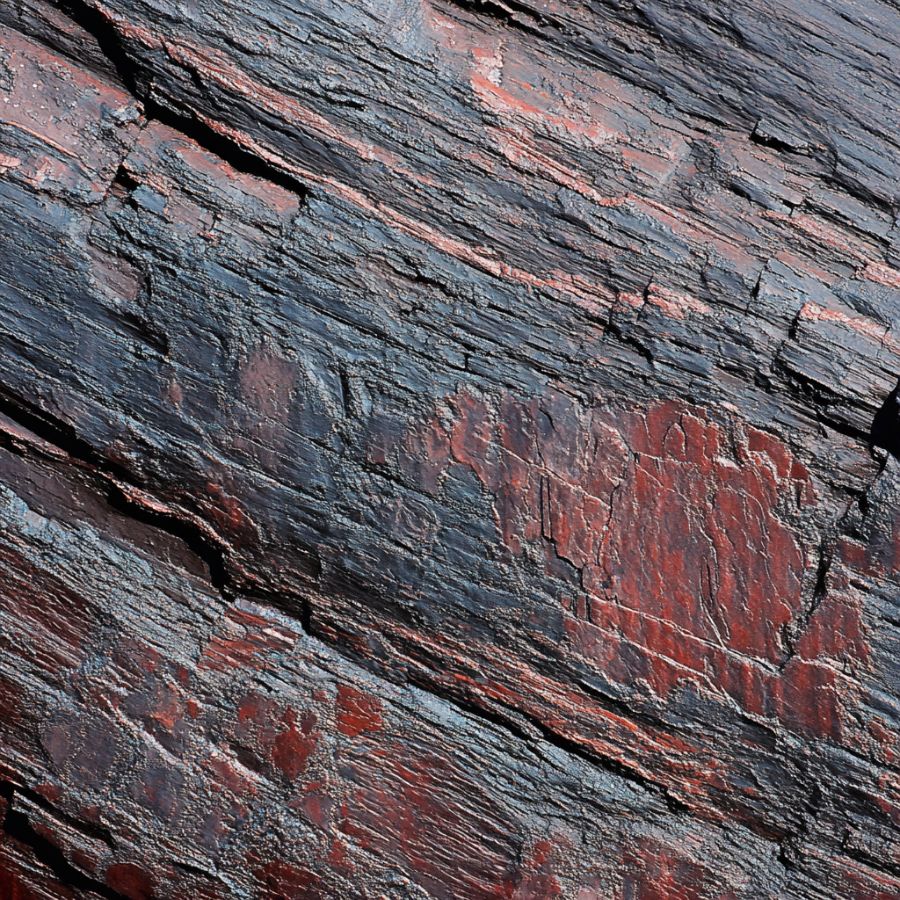
Another telltale sign of petrified wood is the presence of bark impressions or external textures that resemble tree bark. These features are often well-preserved and can include the rough, fibrous texture of bark, knots, or other surface irregularities typical of natural wood.
The exterior of rough petrified wood may also have a weathered appearance, with cracks and fractures that occurred as the wood fossilized over millions of years. Look closely for these natural wood features, as they can be a strong indicator that you have found a piece of petrified wood.
Weight and density
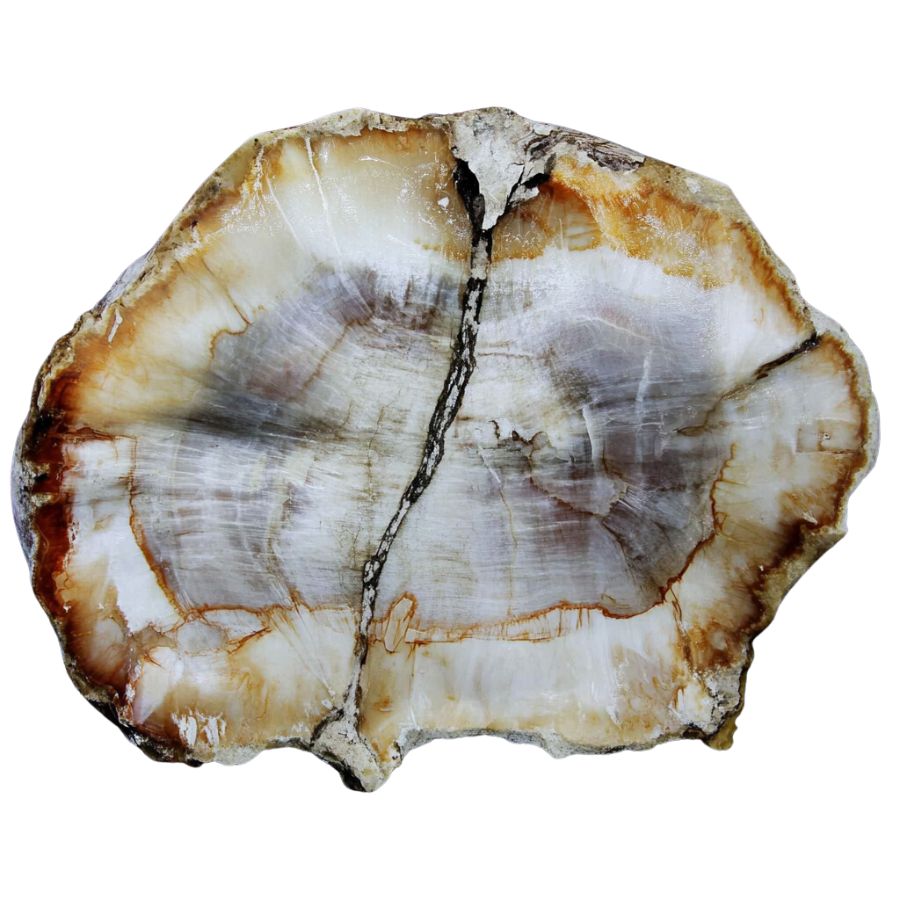
Petrified wood is typically much heavier and denser than regular wood due to the mineralization process. When rockhounding, pick up the specimen to feel its weight. Even small pieces of petrified wood will feel significantly heavier than an equivalent-sized piece of non-fossilized wood.
This increased density is due to the replacement of organic material with minerals, making petrified wood feel more like a rock than wood. Comparing the weight and density of your find with known samples of petrified wood can help confirm its authenticity.
- The extensive local experience of our team
- Input from a variety of local rockhounds and rockhound groups
- The difficulty in accessing a location
- Safety and potential hazards when collecting
- Private and public locations
- A desire to include locations for both the experienced and newbie hunters who are just starting out
Using these inputs we think we’ve put together the best list out there for those who love finding petrified wood for our collections!
General Areas To Try First
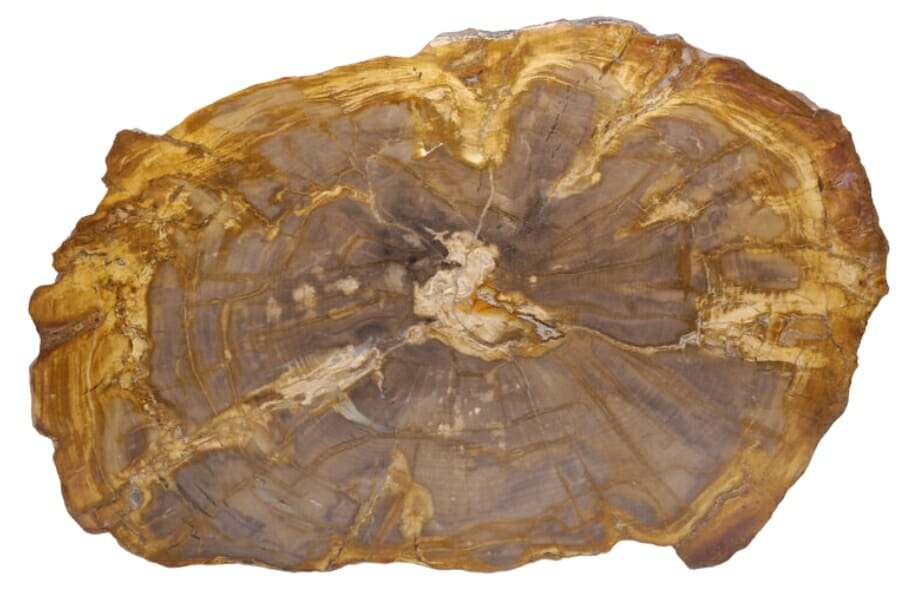
Before we get into the specific places you should be looking we wanted to give you some more general advice. Once you get to your hunting area you should head straight for these areas if you want to have the best results:
Lakeshores
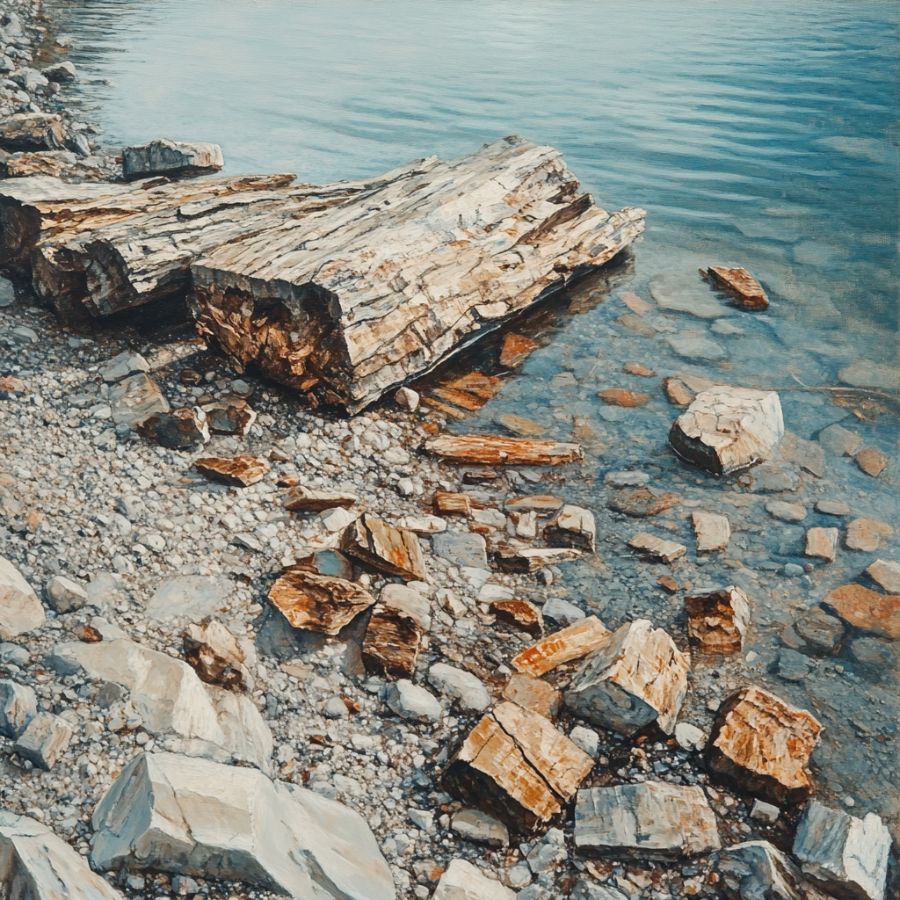
Lakeshores are like natural garbage cans because all things wash up and get left there over time. That includes wood that has turned to stone. As the water rises and falls, it carries sediment and rocks. It also takes the fossilized remains of trees from long ago.
Most lakeshores have a variety of rocks and minerals, which makes them an excellent place for petrified wood to grow and thrive. You’ll find a nice mix of sedimentary and volcanic rocks, the best sites for preserving wood fossils.
Roadcuts
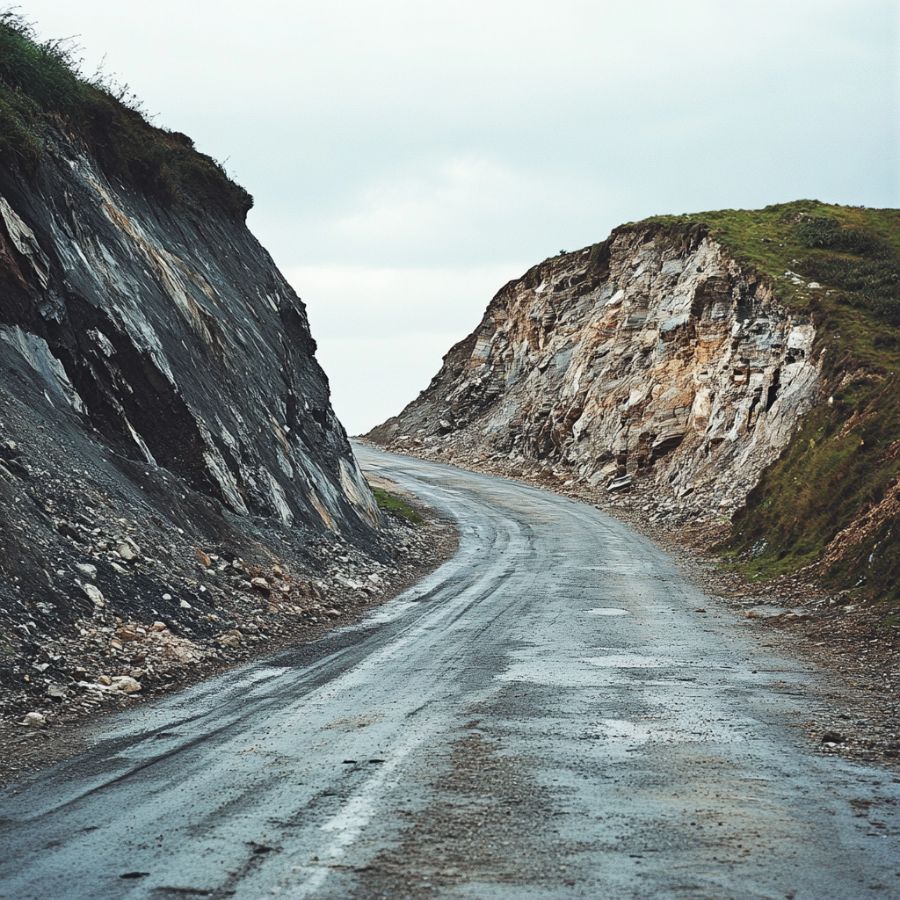
When building roads, parts of the ground are often cut away to make a smooth path. The magic happens when the road cuts through layers of rock and soil. Petrified wood is often buried deep underground, and roadcuts let us see these underground wonders.
As workers blast through the rock layers, they accidentally find petrified wood that has been there for hundreds of years. Petrified wood is easy for collectors to spot because the exposed rock layers of roadcuts make it easy to see its unique patterns and colors.
Streams and creeks
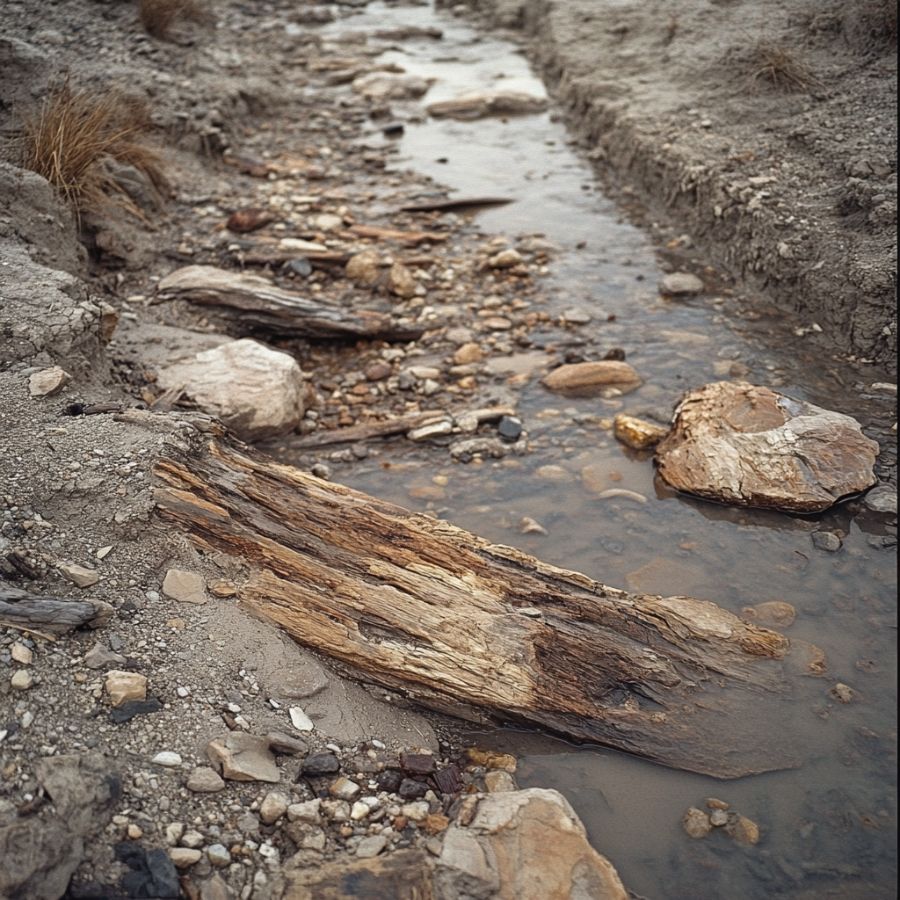
Streams and creeks can move loose sediment away, which can reveal old wood that has turned to stone. As the water moves around, it exposes small pieces or even more significant amounts of petrified wood that have settled on the streambed.
Streams and creeks are more accessible for collectors because they are not as big. You can easily walk along their banks, jump from rock to rock, and look for petrified wood at the water’s edge.
River beds
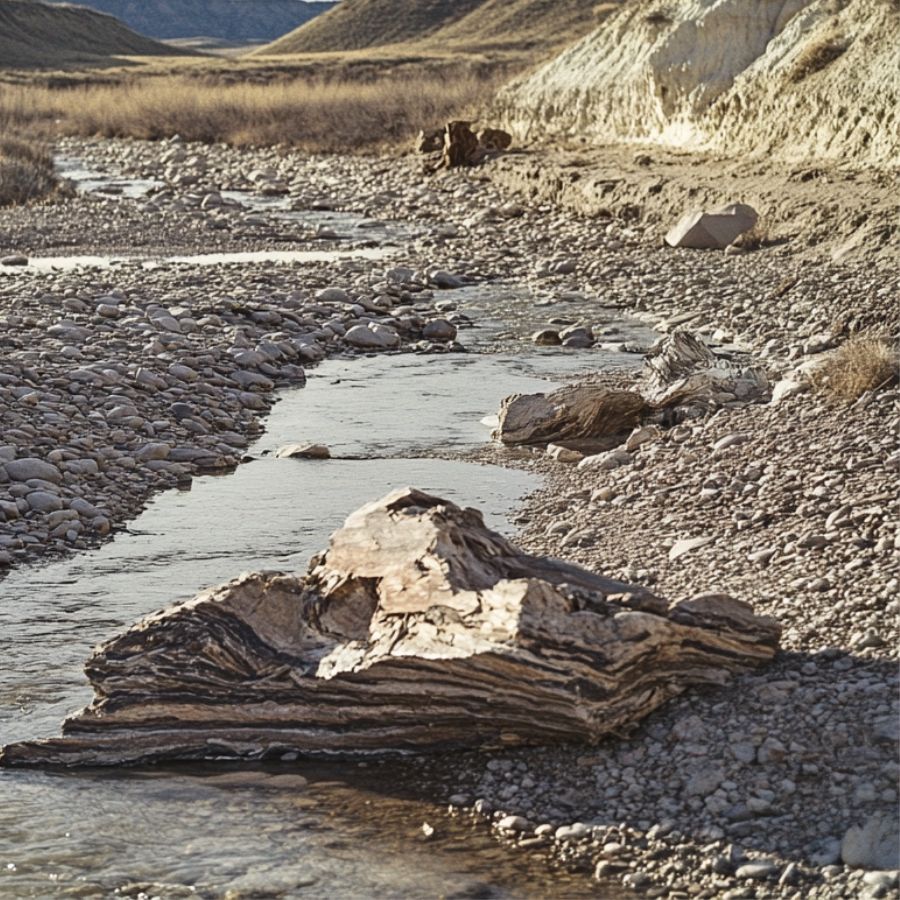
Riverbeds are excellent for finding petrified wood due to their unique geological and environmental conditions. Rapid burial by sediments like sand, silt, and mud protects fallen trees from decay, initiating the fossilization process.
Mineral-rich waters flowing through rivers facilitate the replacement of organic material with minerals such as silica, turning wood into stone. Over time, erosion exposes these buried treasures, making them accessible for discovery.
This dynamic environment, with constant sediment deposition and mineral infiltration, creates ideal conditions for the formation and eventual exposure of petrified wood.
DON'T MISS OUT ON ANY GREAT FINDS!
While you're out searching for Petrified Wood you're going to find A LOT of other interesting rocks and minerals along the way. The last thing you want to do is toss out something really interesting or valuable. It can be easy to misidentify things without a little guidance.
We've put together a fantastic field guide that makes identifying 140 of the most interesting and valuable rocks and minerals you will find REALLY EASY. It's simple to use, really durable, and will allow you to identify just about any rock and mineral you come across. Make sure you bring it along on your hunt!
The Best Places To Find Petrified Wood In Oregon
When it comes to natural resources, our state can boast of having a wide variety of them. In fact, there are plenty of great rockhounding sites in Oregon. So if you’re looking specifically for petrified wood, you might have a hard time sorting through all of these sites.
So we did the hard work for you and discussed here our most recommended sites to find Oregon petrified wood.
Always Confirm Access and Collection Rules!
Before heading out to any of the locations on our list you need to confirm access requirements and collection rules for both public and private locations directly with the location. We haven’t personally verified every location and the access requirements and collection rules often change without notice.
Many of the locations we mention will not allow collecting but are still great places for those who love to find beautiful rocks and minerals in the wild without keeping them. We also can’t guarantee you will find anything in these locations since they are constantly changing.
Always get updated information directly from the source ahead of time to ensure responsible rockhounding. If you want even more current options it’s always a good idea to contact local rock and mineral clubs and groups
Sweet Home Petrified Forest
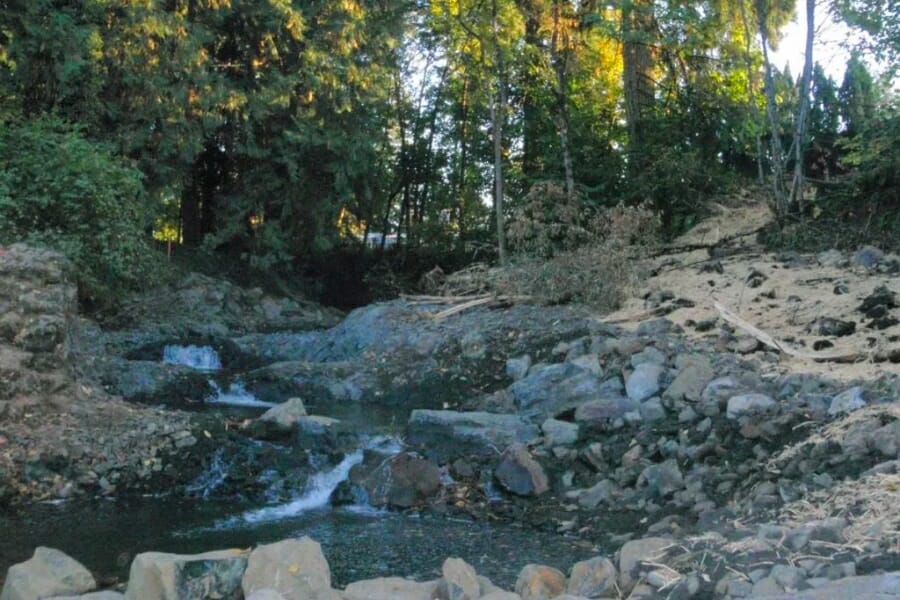
The Sweet Home Petrified Forest is an incredible place for rockhounds and nature lovers. It’s located in the Willamette Valley, nestled between the Cascade Mountains and the Coastal Range. Its terrain varies from rolling hills covered with lush vegetation to areas of rocky outcrop.
In terms of geology, this area is a goldmine! The petrified forest itself is the result of ancient trees that were rapidly covered by volcanic ash and transformed into stone over millions of years. The geological forces that shaped it have left a rich variety of rocks and minerals, making it an exciting place to explore for petrified wood.
Getting to the Sweet Home Petrified Forest is quite straightforward. It’s conveniently located near the town of Sweet Home, which is about a 90-minute drive from Eugene or a two-hour drive from Portland. From Sweet Home, it’s a short trip east on Highway 20 to the forest.
But be reminded that there are strict rules about where you can collect in our state. Sweet Home Petrified Forest is a protected area where collecting is not allowed, but you can definitely indulge in exploring, uncovering, and observing natural wonders here. For more information, check out Oregon’s collecting guidelines.
Where we found petrified wood in Sweet Home Petrified Forest
You can find silicified woods if you explore the petrified forest, especially along Ames Creek and the shores of the Calapooia River.
Clarno Fossil Beds
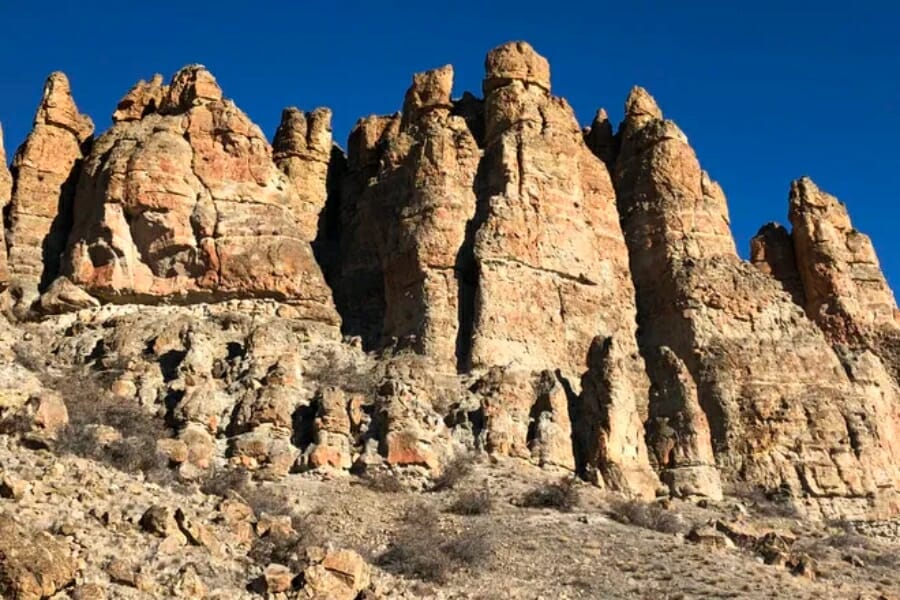
The Clarno Fossil Beds are an absolute treasure trove! It’s part of the John Day Fossil Beds National Monument, which is situated in the eastern part of our state. It’s blessed with a striking landscape of rugged cliffs, fascinating rock formations, and semi-arid shrublands that make for a dramatic backdrop.
These fossil beds are home to an array of plant and animal fossils that are millions of years old. From ancient leaves, nuts, and seeds to the remnants of early horses and elephants, the variety is astounding. These are embedded in a series of ancient volcanic mudflows known as lahars, creating a natural time capsule.
The trip to Clarno Fossil Beds is part of the entire petrified wood-hunting adventure. It’s located about a three-hour drive east of Bend. From the town of Fossil, you’ll head south on Route 218. This journey offers a scenic drive through our state’s stunning high desert landscape.
Where we found petrified wood in Clarno Fossil Beds
Explore the different nooks and crannies of the Clarno Fossil Beds to find stunning samples of petrified wood.
Crook County
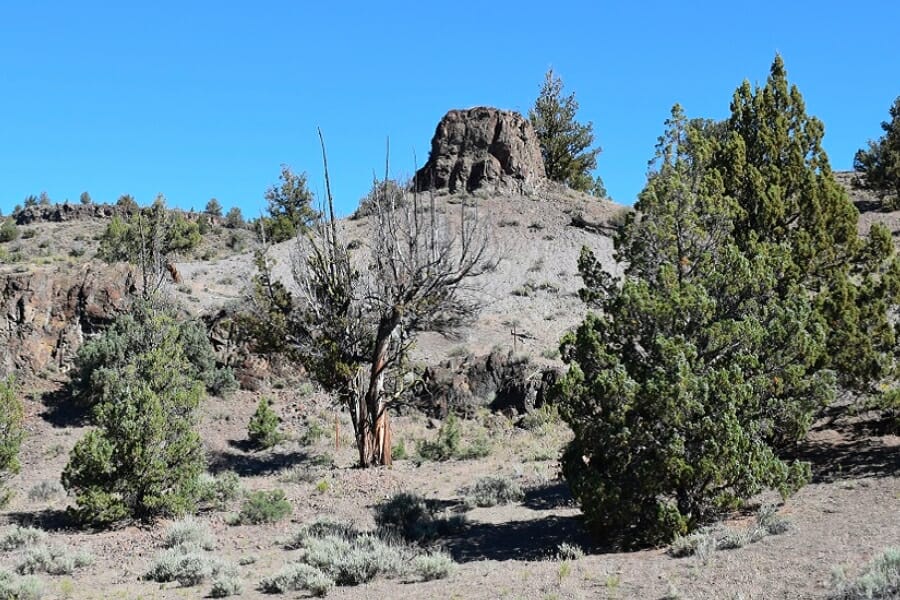
Crook County is nestled in the high desert region, surrounded by the majestic Cascade Range to the west and the Ochoco Mountains to the east. The terrain here is a vibrant mix of desert plains, rolling hills, and forested mountains, providing a beautiful setting for exploration.
Geologically, this county is a rockhound’s paradise! Its history is etched in the landscape, from ancient lava flows to layers of sedimentary rock loaded with marine fossils.
The journey to reach Crook County is a pretty straightforward one. It’s about a three-hour drive from Portland, or two hours from Eugene. Most people head for the city of Prineville, which is right in the heart of the county. From there, it’s easy to explore its geological wonders.
Where we found petrified wood in Crook County
There are plenty of areas where you can find petrified wood in Crook County, including the following specific spots:
- Land surfaces, draws washes on the west side of the county
- Fisher Canyon
- Logan Butte at Owens Water-South Pole Creek
- Shotgun Road to Booton Ranch
- Bonnieview Ranch
- Dick Ranch
- South Fork of the Crooked River
- Southwest to the Deschutes County border
Table Rock
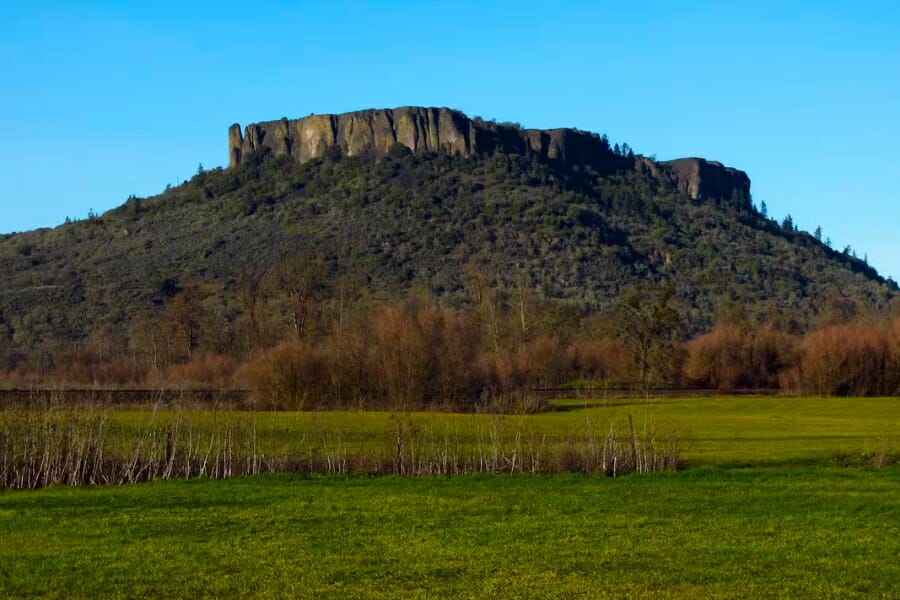
Table Rock, nestled in the Rogue River Valley, is an impressive sight that appeals to both outdoor enthusiasts and rockhounds. This geological gem, actually composed of two mesas: Upper and Lower Table Rock.
This was formed by lava flows over seven million years ago. These flat-topped buttes rise high above the surrounding landscape, offering a striking contrast to the rolling hills and fertile farmlands below.
Table Rock is characterized by its high cliffs, vast plateau, and unique vernal pools, home to a variety of unique plant species. Geologically, it showcases a striking layer of hard andesite lava atop softer layers of tuff and conglomerate. This combination leads to the flat-top appearance that gives Table Rock its name.
This amazing wonder is located just north of Medford, which is accessible via Interstate 5. Once you reach Medford, you follow Table Rock Road towards the Upper or Lower trailhead. Both hiking trails are well-marked and offer breathtaking views of the Rogue Valley and surrounding mountains.
Where we found petrified wood on Table Rock
You can find fascinating specimens of petrified wood if you explore Table Rock, especially in all streams and run-off areas on its north slope.
Crater Lake National Park
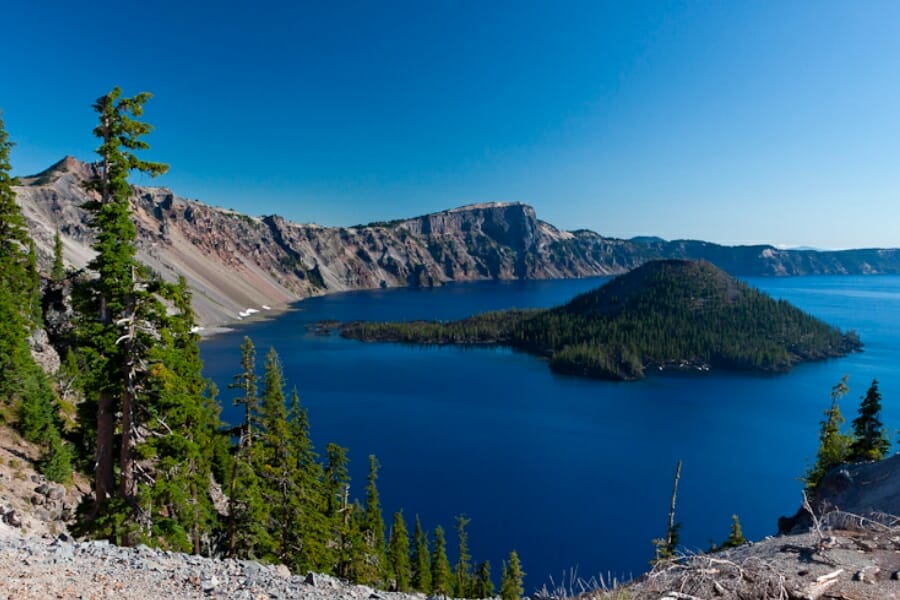
Crater Lake National Park is an extraordinary destination that captures the imagination of geology buffs and nature lovers. It houses Crater Lake, the deepest lake in the U.S., which fills the caldera of Mount Mazama, a collapsed volcano.
The region is defined by the lake’s vibrant blue waters, surrounding cliffs, and two picturesque islands that were formed by subsequent volcanic activity. Its terrain is a diverse mix of rugged cliffs, dense forests, and open meadows. Geologically, it’s a wonderland, showcasing the incredible power of volcanic activity.
Crater Lake National Park is quite accessible if you want to go here. It’s about a two-hour drive from Bend via Route 97 and Route 138. Once you’re in the park, you can follow the 33-mile Rim Drive that encircles the lake, offering multiple viewpoints and trailheads.
Where we found petrified wood in Crater Lake National Park
Explore all the areas surrounding the Crater Lake National Park if you want to find petrified wood.
Other Great Places To Find Oregon Petrified Wood
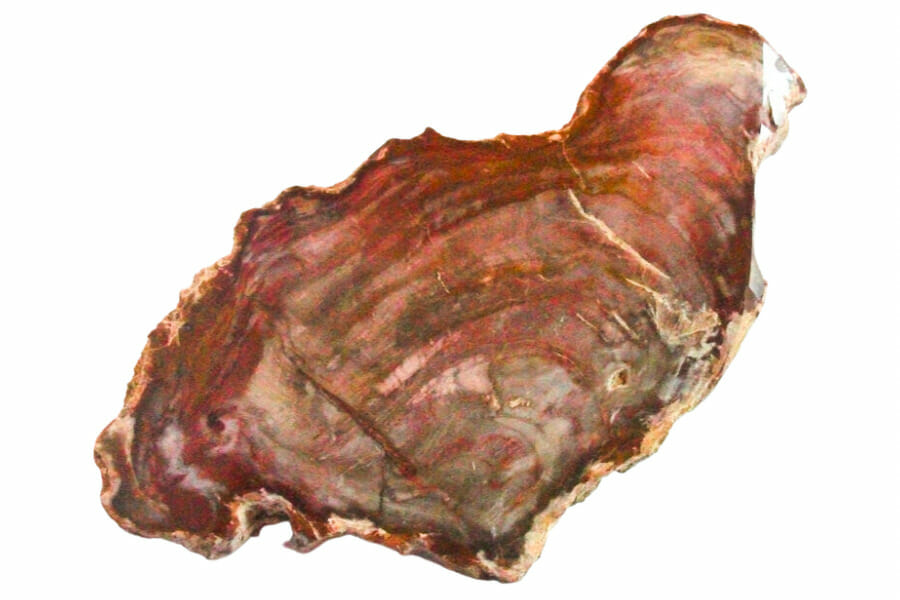
If you’ve been to our top recommended sites and want to explore other petrified wood-bearing spots here, we’ve got you covered! Below are more proven places where you can find Oregon petrified wood, listed down by county for your easier reference.
| County | Location |
| Baker | Shirttail Creek |
| Baker | Area draws, washes, hillsides of Pleasant Valley |
| Baker | Greenhorn District area gravel surfaces |
| Baker | Triangular area from Baker to Richland to Durkee back to Baker |
| Baker | Unity area |
| Benton | Low-water gravel bars of Willamette River and tributaries |
| Coos | Ocean beaches of Coos Bay |
| Coos | Bullards Beach State Beach |
| Coos | Fossil Point and area beaches of Charleston |
| Coos | Whiskey Run Beach |
| Curry | Rogue River |
| Deschutes | Unnamed butte directly west of Hampton Butte |
| Douglas | Countywide along ocean beaches |
| Douglas | North Umpqua River |
| Douglas | Gravel bars of South Umpqua River |
| Grant | Middle Fork of the John Day River |
| Harney | Area surfaces of Warm Springs Reservoir |
| Harney | Saddle Butte |
| Jackson | Both sides of the road in Brownboro area |
| Jefferson | Norton Ranch |
| Jefferson | Cherry Creek and John Day River |
| Jefferson | Kennedy Ranch |
| Jefferson | Richardson Ranch |
| Jefferson | Folmsbee Ranch |
| Josephine | Oregon Caves |
| Lake | Warner Canyon |
| Lake | Quartz Pass area |
| Lake | Sycan Butte area |
| Lane | Beach gravels between Yachats and Florence |
| Lincoln | Area beaches of Newport especially Agate Beach |
| Lincoln | Beach gravels of China Creek to Commings Creek |
| Malheur | Jamieson area |
| Malheur | Surrounding area of Willow Creek Reservoir |
| Malheur | Gravels of Jordan Creek |
| Malheur | Immeadia area surrounding Nyssa |
| Malheur | Alkalin Lake |
| Malheur | Sucker Creek |
| Wasco | Area stream gravels of Mosier |
| Wasco | Chenoweth Creek gravels |
| Wheeler | John Day River |
Common Questions About Finding Petrified Wood In Oregon
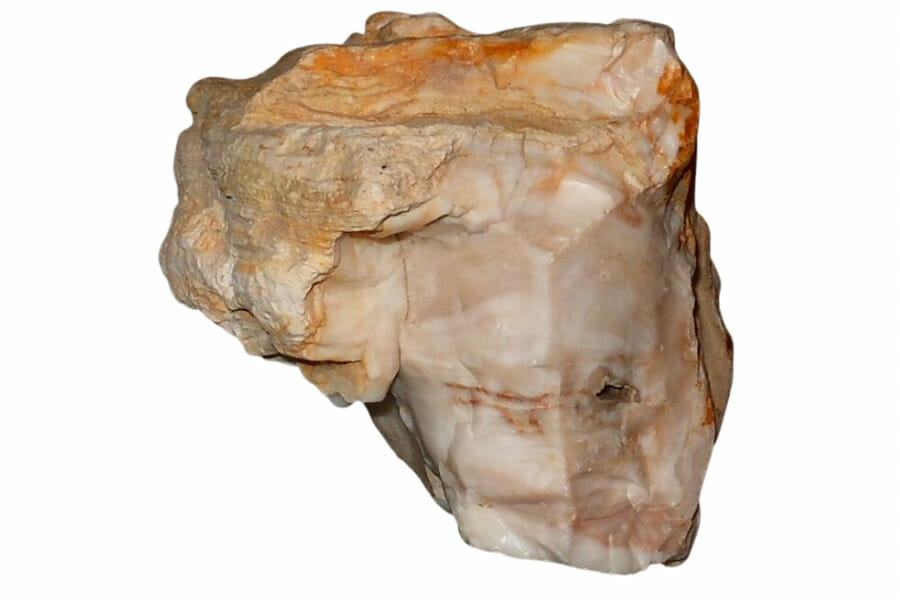
Here are some of the most commonly-asked questions about finding petrified wood in Oregon that you might have in mind, too:
How old is Petrified Wood in Oregon
Oregon petrified wood provides a fascinating window into our ancient history, with many pieces dating back tens of millions of years.
Much of these come from the Miocene epoch, which lasted from about 23 to 5 million years ago. This was a time of significant geological activity in our region, with frequent volcanic eruptions that quickly buried local forests under layers of ash and sediment. Over long periods of time, this organic material was replaced by silica and other minerals, ultimately forming the beautiful petrified wood we find today.
So, when you’re holding a piece of Oregon petrified wood, you’re touching a relic from an incredibly distant past, a testament to the power and beauty of nature’s transformations.
Can you find Petrified Palm Wood in Oregon
Unfortunately, Oregon is not known for having petrified palm wood, as this type is generally associated with regions where palm trees naturally grew in the past. The petrified woods you’ll find here are mostly from coniferous trees due to our climate and environment when the petrification process occurred.
The Best Places To Buy Petrified Wood In Oregon
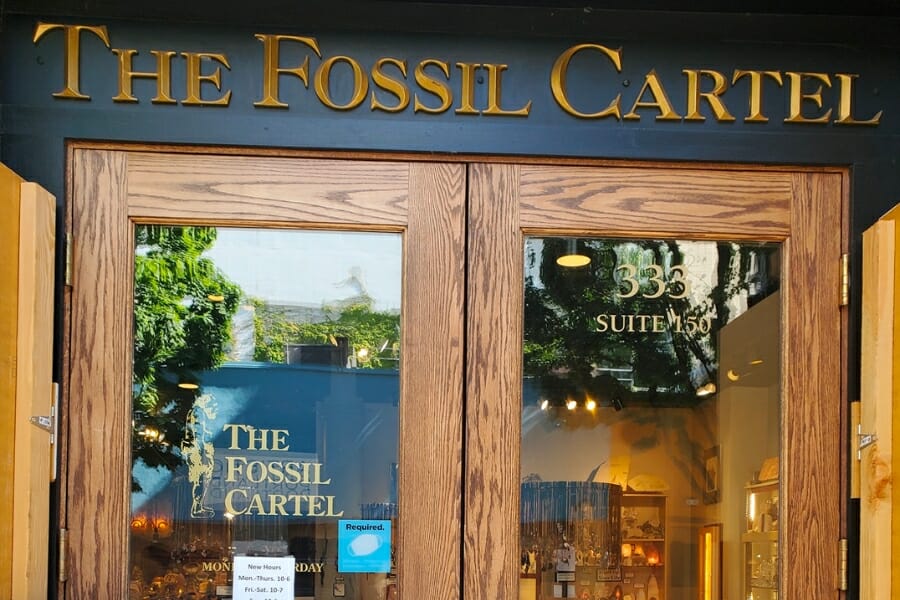
While nothing beats the thrill and excitement of searching for petrified wood in the diverse and interesting landscapes and waterscapes of Oregon, there are those who’d rather do it the easy way— like visiting the local shops here.
If you’re one of them, check out these stores:
- Hi Desert Craft Rock Shop – 1837 N 4th St, Lakeview, OR 97630
- OreRockOn – 18403 S Clear Acres Dr, Oregon City, OR 97045
- Richardson’s Rock Ranch – 6683 Hay Creek Rd, Madras, OR 97741
- Scott’s Rock & Gem – 1009 Talent Ave, Talent, OR 97540
- The Fossil Cartel – 333 SW Taylor St #150, Portland, OR 97204

